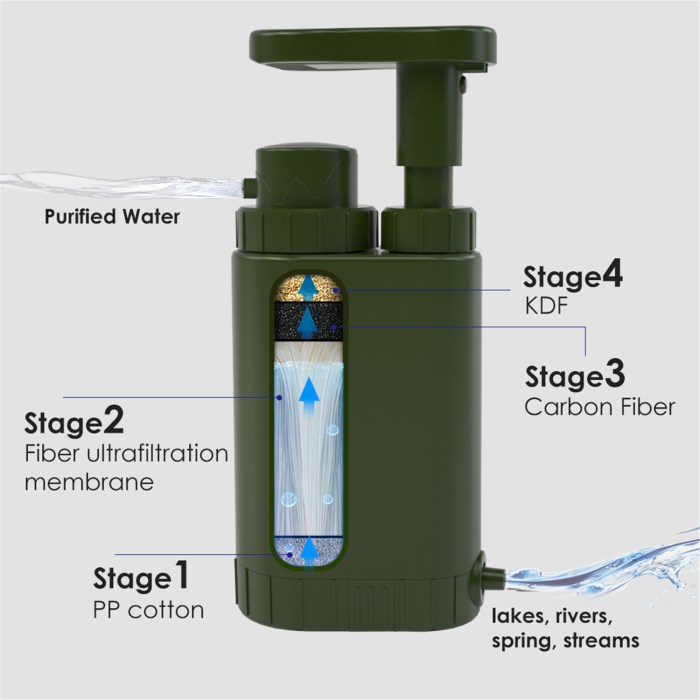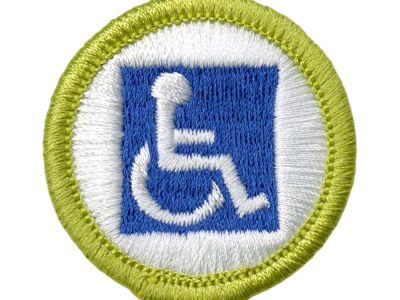Robotics Merit Badge Online is an exciting opportunity for students to delve into the fascinating world of robotics. This online program provides a comprehensive exploration of robotics concepts, hands-on projects, and career exploration, empowering students with the knowledge and skills to succeed in this rapidly growing field.
Through engaging modules and interactive projects, students will gain a deep understanding of robotics principles, different types of robots, and their applications in various industries. They will also learn essential programming languages and software, enabling them to design, build, and test their own robots.
Introduction

The Robotics Merit Badge is a program designed for Scouts who are interested in learning about the exciting field of robotics.
This online program provides Scouts with the opportunity to explore the different aspects of robotics, from the basics of engineering and programming to the latest advancements in the field.
Purpose of the Online Program
The online program is designed to provide Scouts with a flexible and accessible way to earn the Robotics Merit Badge.
The program is self-paced, allowing Scouts to learn at their own speed and on their own schedule.
Program Structure
The Robotics merit badge program is divided into four sections: Introduction to Robotics, Programming Robots, Building Robots, and Robotics Competition.
The Introduction to Robotics section provides an overview of the field of robotics, including the history of robotics, the different types of robots, and the applications of robotics. The Programming Robots section teaches the basics of programming robots, including how to use a programming language to control a robot’s movement and behavior.
The Building Robots section teaches the basics of building robots, including how to design and construct a robot.
Learning Objectives
Upon completion of the Robotics merit badge program, scouts will be able to:
- Describe the history of robotics.
- Identify the different types of robots.
- Describe the applications of robotics.
- Program a robot to perform a simple task.
- Build a simple robot.
- Participate in a robotics competition.
Robotics Concepts

Robotics, an amalgamation of engineering and computer science, revolves around the design, construction, and operation of robots. These machines, ranging from autonomous to semi-autonomous, are programmed to perform specific tasks with varying degrees of independence.
Robotics finds applications in diverse fields, including manufacturing, healthcare, space exploration, and disaster relief. The fundamental concepts underlying robotics encompass mechanics, electronics, computer science, and artificial intelligence.
Types of Robots
Robots are classified into various types based on their design, function, and level of autonomy. Common types include:
- Industrial robots:Employed in manufacturing settings for repetitive tasks like welding, assembly, and painting.
- Service robots:Designed to assist humans in non-industrial environments, such as domestic chores, healthcare, and customer service.
- Mobile robots:Equipped with wheels or legs, these robots navigate their surroundings autonomously, performing tasks like exploration, mapping, and delivery.
- Humanoid robots:Mimicking human form and capabilities, these robots are designed for tasks requiring human-like interaction and dexterity.
Real-World Applications
Robotics has revolutionized numerous industries and applications:
- Manufacturing:Robots enhance productivity and precision in assembly lines, welding, and painting.
- Healthcare:Surgical robots assist in complex procedures with increased accuracy and reduced recovery time. Service robots aid in patient care and rehabilitation.
- Space exploration:Rovers and probes explore extraterrestrial environments, collecting data and conducting experiments.
- Disaster relief:Robots navigate hazardous environments, providing reconnaissance, search and rescue operations, and delivery of supplies.
Practical Projects
Students will engage in hands-on projects that provide practical experience with robotics principles. These projects are designed to demonstrate key concepts and foster problem-solving skills.
- Robot Construction:Students assemble and wire robots, learning about electrical circuits, mechanical components, and sensor integration.
- Programming:They program robots to perform specific tasks, exploring concepts like variables, loops, and conditional statements.
- Testing and Troubleshooting:Students test and debug their robots, identifying and resolving issues to ensure optimal performance.
- Obstacle Course Navigation:Robots are programmed to navigate obstacles, showcasing principles of path planning, sensor feedback, and motor control.
- Line Following:Students build robots that follow lines, demonstrating the use of sensors, actuators, and feedback mechanisms.
Engineering Design Process
The engineering design process is a systematic approach to solving engineering problems. It involves defining the problem, researching potential solutions, designing and prototyping a solution, testing and evaluating the solution, and refining the design as needed.Prototyping and testing are essential parts of the engineering design process.
Prototypes allow engineers to test their designs and identify any potential problems. Testing allows engineers to evaluate the performance of their designs and make any necessary modifications.The engineering design process is used in all aspects of robotics, from the design of new robots to the development of new robotic applications.
For example, engineers used the engineering design process to develop the Mars rovers, which are designed to explore the surface of Mars. The engineers first defined the problem, which was to design a rover that could withstand the harsh conditions on Mars and collect scientific data.
They then researched potential solutions and designed and prototyped a rover. The rover was then tested in a simulated Martian environment and refined as needed.
Coding and Programming
Students in the Robotics merit badge online will delve into the realm of coding and programming, the essential language of robotics. They will master the basics of programming languages specifically designed for robotics, such as Python and C++. Through hands-on exercises and engaging challenges, they will learn how to command robots to perform complex tasks, solve problems, and navigate their surroundings.
Programming Languages and Software
The merit badge curriculum introduces students to the fundamentals of programming languages like Python and C++. Python, known for its simplicity and readability, is ideal for beginners, while C++ offers greater control and efficiency for advanced projects. Students will also become familiar with popular robotics software platforms like ROS (Robot Operating System) and Arduino IDE, which provide comprehensive toolkits for developing and deploying robotic applications.
Coding Challenges and Exercises
To reinforce their coding skills, students will engage in a series of coding challenges and exercises designed to test their understanding and problem-solving abilities. These challenges may involve tasks such as programming a robot to navigate a maze, follow a line, or respond to sensor inputs.
Through these exercises, students will develop their critical thinking and analytical skills, essential for successful robotics programming.
Career Exploration
Robotics is a rapidly growing field with a wide range of career opportunities. Robotics professionals design, build, and maintain robots for a variety of applications, including manufacturing, healthcare, space exploration, and defense.
Skills and Qualifications
Robotics professionals typically need a strong foundation in science, technology, engineering, and mathematics (STEM). They also need to be creative, have problem-solving skills, and be able to work independently and as part of a team.Some of the most common skills and qualifications for robotics careers include:
- A bachelor’s degree in robotics, computer science, engineering, or a related field
- Experience with programming languages such as C++, Python, and Java
- Knowledge of robotics hardware and software
- Excellent communication and interpersonal skills
li>Strong problem-solving and analytical skills
Successful Robotics Professionals
There are many successful robotics professionals who have made significant contributions to the field. Some of the most notable include:
- Rodney Brooks, founder of iRobot and Rethink Robotics
- Sebastian Thrun, co-founder of Google’s self-driving car project
- Daniela Rus, director of the Computer Science and Artificial Intelligence Laboratory at MIT
Safety and Ethics
When working with robots, students must adhere to safety precautions to prevent accidents and injuries. These include wearing appropriate safety gear, operating robots in designated areas, and being aware of potential hazards.
Robotics also raises ethical considerations. Ethical dilemmas arise when robots are used in ways that affect human values and well-being. For instance, robots may be used to automate tasks that could lead to job displacement, or they may be used in warfare, raising questions about the morality of using robots to kill.
Ethical Dilemmas in Robotics, Robotics merit badge online
- Job Displacement:Robots can automate tasks that were previously done by humans, leading to concerns about job loss and economic inequality.
- Privacy and Surveillance:Robots equipped with sensors and cameras can collect vast amounts of data, raising concerns about privacy violations.
- Autonomy and Responsibility:As robots become more autonomous, questions arise about who is responsible for their actions and the consequences they may cause.
- Military Use:The use of robots in warfare raises ethical concerns about the potential for unintended harm and the dehumanization of conflict.
Resources and Support
Students in the Robotics merit badge program have access to a wide range of resources and support to help them succeed. These resources include:
- Online forums and discussion boards where students can connect with other students and mentors to ask questions and share ideas.
- A dedicated website with resources such as lesson plans, tutorials, and project ideas.
- Mentors who are experienced robotics professionals who can provide guidance and support to students.
Students can get help with their projects and assignments by:
- Posting questions on the online forums and discussion boards.
- Contacting their mentors directly.
- Attending workshops and events where they can learn from experts and other students.
Contact information for program organizers and mentors is available on the program website.
Conclusion

The Robotics Merit Badge online program empowers students to delve into the captivating world of robotics. Through hands-on projects, interactive simulations, and expert guidance, the program equips participants with the knowledge and skills necessary to navigate the ever-evolving field of robotics.Embark
on this extraordinary journey to explore the fundamentals of robotics, discover the latest advancements, and unleash your creativity in building and programming robots. The Robotics Merit Badge online program awaits your participation, offering a transformative learning experience that will ignite your passion for robotics and inspire your future endeavors.
Call to Action
Join the Robotics Merit Badge online program today and unlock a world of possibilities. Register now to secure your spot in this enriching and rewarding educational adventure. Don’t miss out on the opportunity to explore the fascinating world of robotics and shape your future as a leader in this dynamic field.
Last Recap: Robotics Merit Badge Online

Robotics Merit Badge Online is an invaluable resource for students interested in pursuing a career in robotics. It provides a solid foundation in robotics concepts, practical skills, and career guidance, preparing students for success in this dynamic and rewarding field.
Questions and Answers
What is Robotics Merit Badge Online?
Robotics Merit Badge Online is an online program that provides students with a comprehensive exploration of robotics concepts, hands-on projects, and career exploration.
What are the benefits of participating in Robotics Merit Badge Online?
Robotics Merit Badge Online provides students with a solid foundation in robotics concepts, practical skills, and career guidance, preparing them for success in this dynamic and rewarding field.
What are the prerequisites for participating in Robotics Merit Badge Online?
There are no specific prerequisites for participating in Robotics Merit Badge Online. However, a basic understanding of science, technology, engineering, and math (STEM) is helpful.




